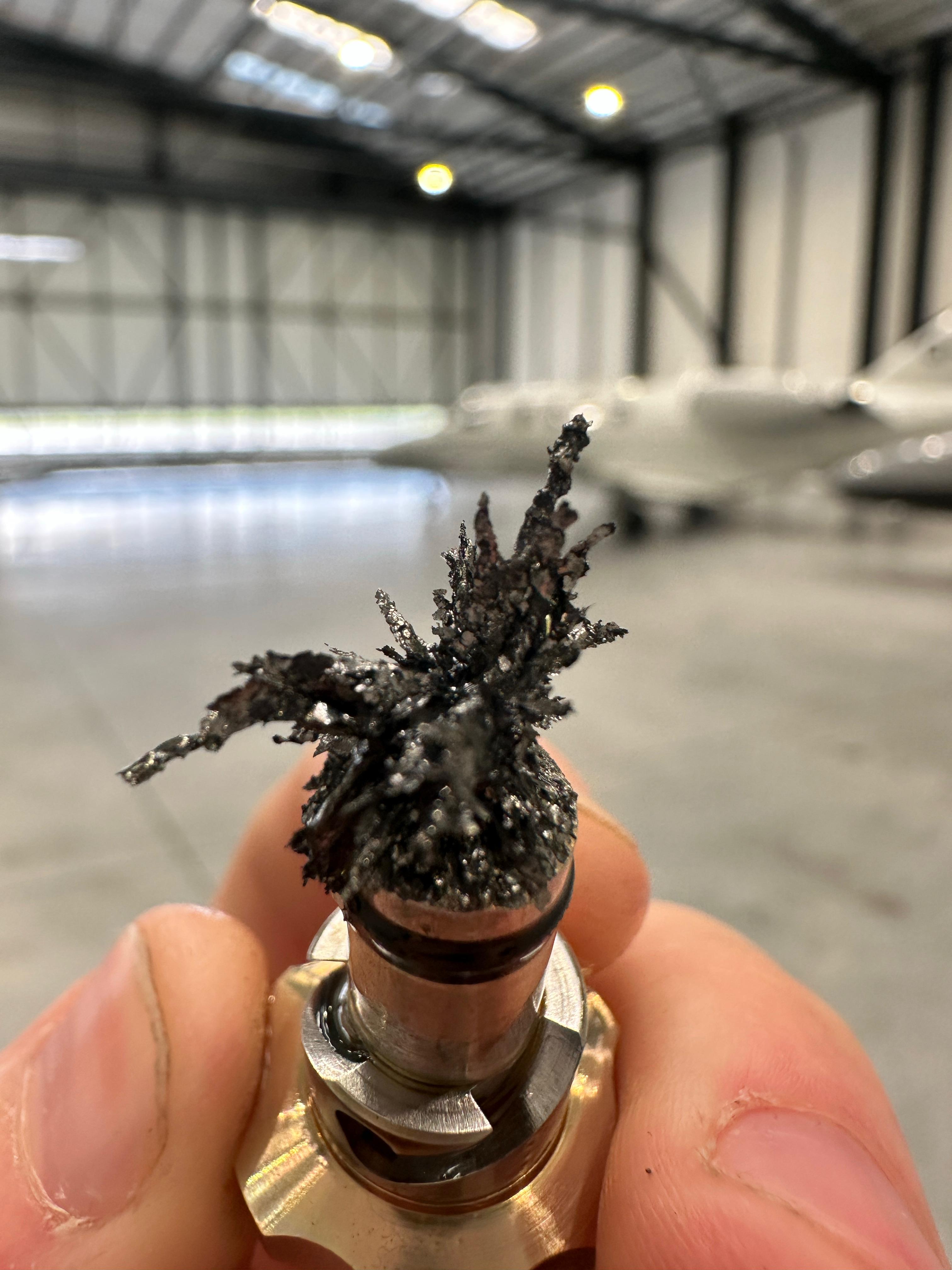If you’re a licensed aircraft engineer, mechanic, or avionics technician, create your free AeroTechCareers profile to showcase your competencies and be found by recruiters actively searching for engineers like you.
Aircraft Details
Type: Business Jet
Location: UK – Biggin Hill
Fault Reported: APU Inoperative
Total Downtime: 5 days
Brief Summary
An aircraft presented with four hard APU faults, including oil filter bypass warnings and FADEC input bus failures. Upon inspection, significant metallic contamination was found on the mag chip and within both oil filters. The team avoided starting the APU and opted for evidence preservation and removal. Their decision likely prevented further internal damage. The APU was replaced with a loan unit and the aircraft was returned to service after successful testing. This is a clear example of aircraft on ground (AOG) support.
Initial Assessment
The customer initially reported the following four APU faults:
- APU FADEC input bus Channel A is disconnected or failed
- APU FADEC input bus Channel B is disconnected or failed
- APU OIL FILTER IMPENDING BYPASS
- GENERATOR OIL FILTER IMPENDING BYPASS
The engineering team accepted the task and attended the aircraft. Using the onboard maintenance system, they confirmed that all faults were hard and current. No APU start was attempted in order to avoid worsening a potentially critical internal condition.
Diagnostic Approach
A methodical inspection began with the removal of the mag chip, which was found to be heavily contaminated with metallic debris. This was followed by the removal of both the APU oil filter and generator oil filter, both of which displayed abnormal levels of metal particles.
In line with the OEM maintenance manuals, the contamination exceeded acceptable thresholds. This necessitated the removal of the APU for further inspection and overhaul by the manufacturer.
The team carefully preserved all evidence. Oil samples, debris samples, and the used filters were packaged and sent for laboratory analysis. Spectrographic analysis confirmed that the debris consisted of metal shards, ruling out carbon deposits and strongly indicating internal bearing damage.

Communication and Planning
The operator was kept informed throughout the process and agreed to the removal and return of the APU to the OEM. A loan APU was sourced from the same manufacturer. In addition, the customer requested that, once the original APU was overhauled, it be reinstalled on the aircraft and the loaner returned. This added an element of long-term planning, requiring coordination across warranty management and internal scheduling.
Logistics and Installation
The loan unit arrived promptly and was installed within the same day. However, the accompanying documentation lacked clarity regarding whether the APU had been preserved for storage and whether the filters needed replacement. To mitigate any potential risk, the team proactively replaced both oil filters and all associated o-rings before attempting a start.
Testing and Return to Service
Priming the fuel system took five start attempts before a successful ignition was achieved. Although slightly unusual, this was not considered abnormal. Once running, the APU underwent a full return to service test sequence. All parameters remained within limits and no faults were present. The aircraft was formally released to service.
Technical Reflection
This case highlights the importance of restraint in fault response. By avoiding an APU start, the team likely prevented additional mechanical damage, particularly to bearing housings and rotating assemblies. The thorough preservation of evidence enabled a clear understanding of the failure mode and may also support any future warranty claims.
It also reflects the broader responsibilities that accompany AOG support. Engineers must often act as technical advisors, logistical coordinators, and mediators between operators and OEMs. In this case, a combination of careful planning, sound technical judgement, and proactive communication ensured that the aircraft returned to service safely and efficiently, with longer-term considerations already in place.


Login or register to join the conversation.
Join the discussion
0 comments